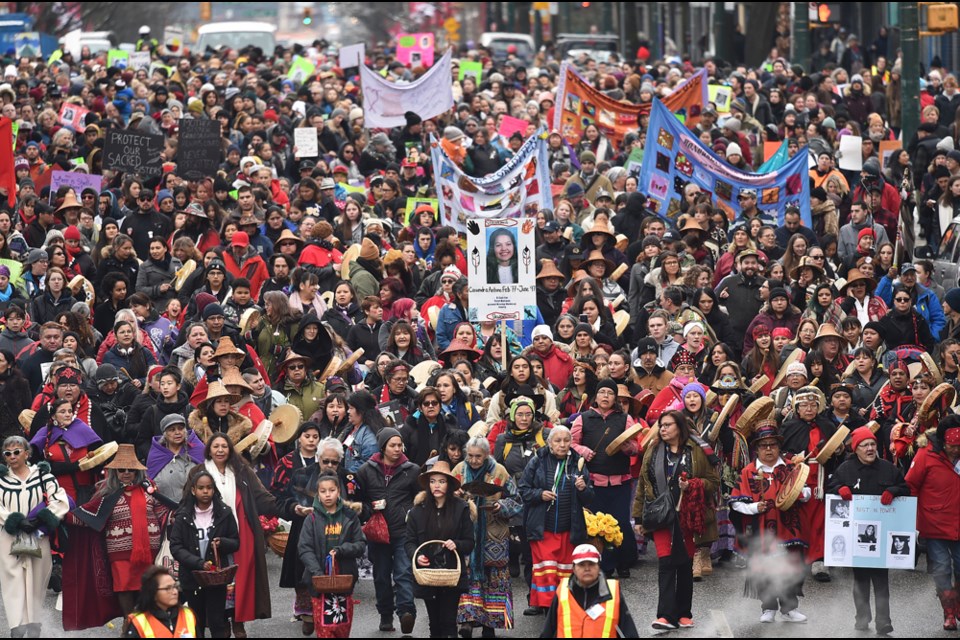In the 28 years since the first Women’s Memorial March, more than 970 names have been added to a list of women who have gone missing or been murdered in the Downtown Eastside.
The annual Valentine’s Day march is a time for friends, families and supporters to remember and honour those lost. Many came with signs and photos of their loved ones. Countless names were emblazoned on a long string of colourful flags that are carried throughout the march — Sarah de Vries, who was one of the victims of serial killer Robert Pickton, Patricia Johnson, Hazel Davies, Gina Olsen. One flag simply had the name Min stitched inside a heart.
As the march, led by a group of Indigenous women, moved through the Downtown Eastside, they stopped periodically at sites where women died or were last seen to offer prayers and roses in remembrance.
“I hold them very closely in my heart,” Carol Martin, one of the event organizers, said before the event started at the corner of Main and Hastings streets.
“I’ve been doing this work down here for almost 30 years… I get really emotional every time this takes place… our First Nations women deal with a lot of systemic barriers in life,” she said talking about the stereotypes and systemic racism many Indigenous women, and men, face on a daily basis.
“Where can I walk as a First Nations’ woman that allows me to be free in who I am? All they see is labels. All they see is stereotypes.”
The march was first organized after a woman was found murdered on Powell Street in January 1992. That first year, just a handful of people turned out. Since then, some things have changed — thousands of people now join the families and friends of the missing and murdered — but on the ground the violence continues and the number of names added to the list grows. Seventy-five names have been added since last year’s march alone.
“We look at the elimination of violence against women where we are today compared to 30 years ago and a whole lot hasn’t changed,” said Juanita Desjarlais, who is a ’60s scoop survivor and a second generation survivor of the residential school system. “There’s a lot of words and there’s a lot of lip service but we need changes today.”
She said there was hope when the inquiries into missing and murdered indigenous women in B.C. and Canada started, but women and girls have continued to fall victim to violence.
“Increasing deaths of many vulnerable women from the Downtown Eastside still leaves family, friends, loved ones, and community members with an overwhelming sense of grief and loss,” the organizing committee said in a press release. “Indigenous women disproportionately continue to go missing or be murdered with minimal action to address these tragedies or the systemic nature of gendered violence, poverty, racism, or colonialism.”
Organizer Myrna Cramner said she was going through the list of names the night before the march and found eight more names that had to be added. She holds up a letter that the B.C. government sent to march organizers.
“Letters are nice, but where the hell are they? A commitment to end violence is nice, but when’s the last time you were down here?
“So I could be really cynical, as I have become down here, you know, our women are being hunted. All I can say is, you know what, they are not your squaw and they are not your Indian princess… they are women who are loved.”
@JessicaEKerr
jkerr@vancourier.com



